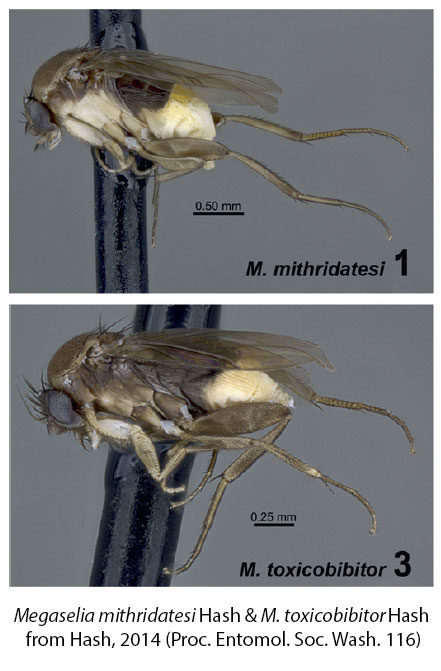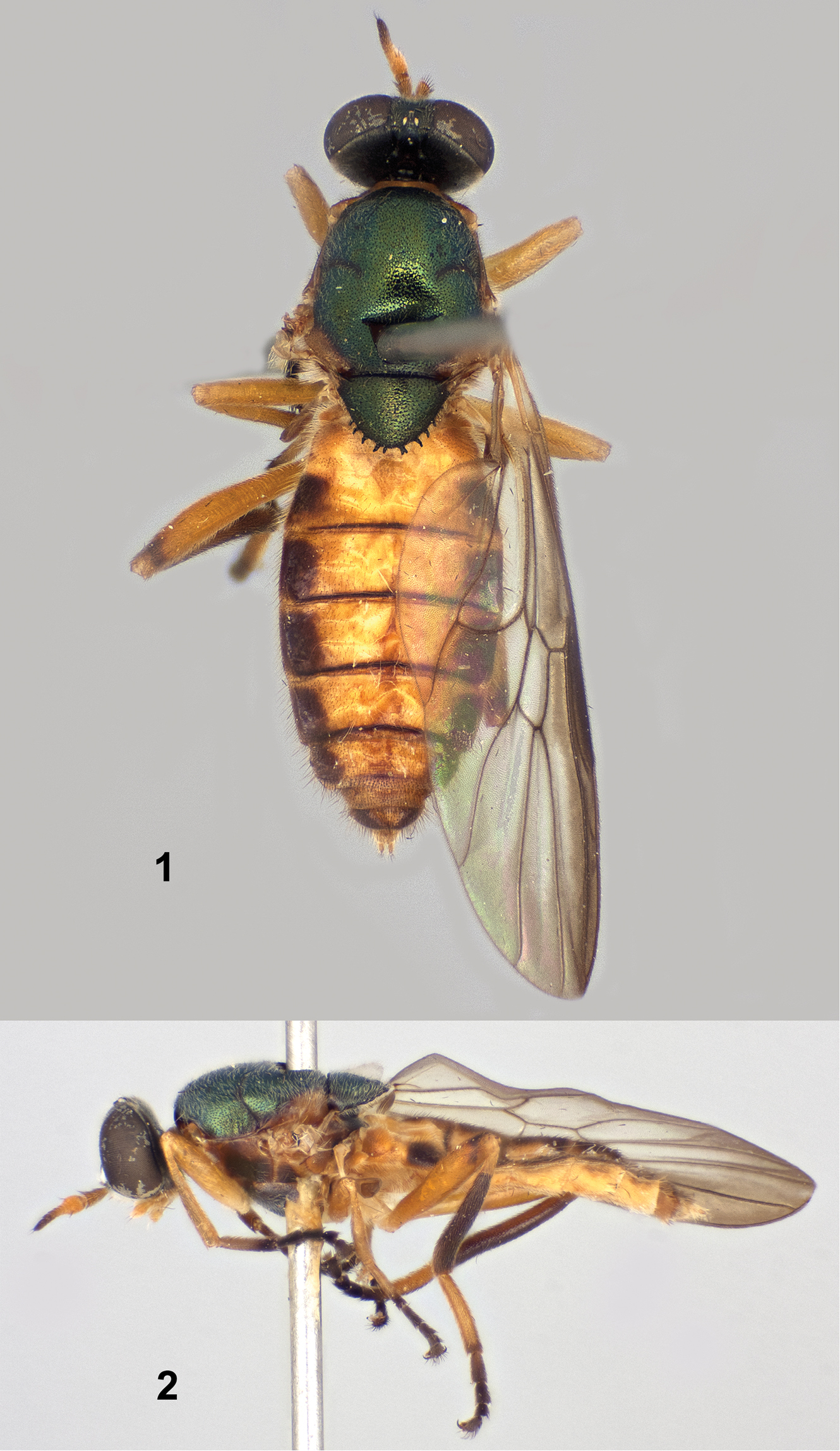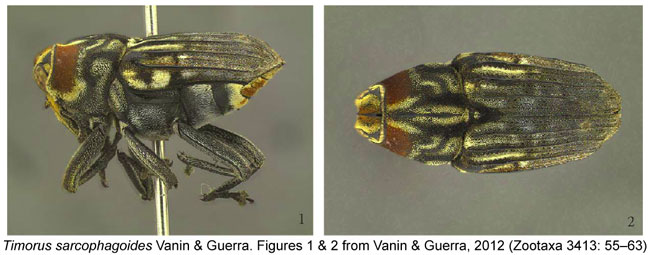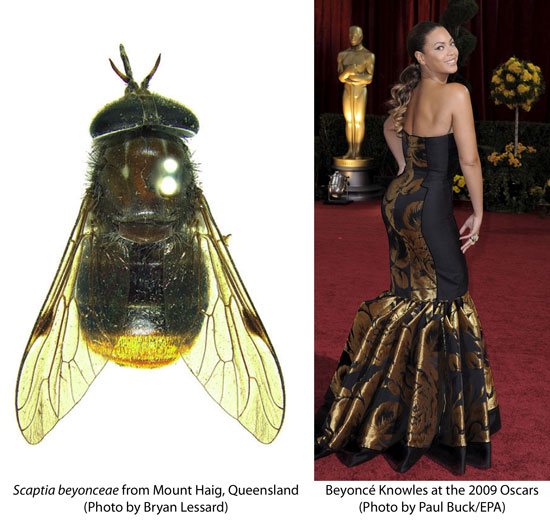Cyanide: poison of choice for jilted lovers, mystery writers, and entomologists alike. But we’re not the only ones to employ this potent potable in our chemical arsenal; polydesmid millipedes have been defending themselves with cyanogenic compounds for millions of years.
Of course, when one organism figures out a new way to protect itself using something that kills lesser creatures, it’s usually not long until somebody else evolves the ability to capitalize on that protection, even when it’s something as deadly as cyanide. Enter 2 new species recently described by John Hash of UC Riverside, Megaselia mithridatesi and Megaselia toxicobibitor, the Rasputins of the scuttle fly world.
Megaselia is an immense genus of Phoridae with a wide diversity of natural histories, so it’s perhaps no surprise that something like cyanide-siphoning could show up here, but that doesn’t reduce the magnitude of such a finding. But how does one go about associating tiny flies unknown to science with murderous millipede defenses?
John works primarily on another genus of scuttle fly that’s also associated with millipedes, Myriophora. Rather than stealing cyanide, these flies prefer to parasitize millipedes protected by another noxious chemical family, benzoquinones. To find these flies, he stresses the millipedes a little by shaking them in a paper towel-lined plastic tube hard enough to piss them off, but not enough to cause physical damage, leading them to exude their defensive chemicals onto the paper towel. John then laid out these poisoned paper towels, and sometimes tied up the annoyed millipedes like the sacrificial goat in Jurassic Park using dental floss, and waited for the flies to come in to the bait. While John was expecting to find new Myriophora species and associations, he states in his paper that discovering a Megaselia/millipede association was a golden example of serendipity in science.
With specimens and natural history notes in hand, John returned to the lab and gave these 2 new species especially fitting names; mithridatesi is an homage to King Mithridates IV of Pontus, who famously immunized himself to a variety of poisons by consuming them in small, sub-lethal quantities, and toxicobibitor, which literally translates to “poison drinker” from Latin.
If you want to hear more about John’s work, and see millipedes on dental floss leashes, check out this video from the Natural History Museum of Los Angeles County, which was filmed while John was down helping out with the Zurqui All Diptera Biodiversity Inventory in Costa Rica. It was while he was here, surrounded by dozens of other dipterists, that he discovered the poisonous habits detailed in this paper. That certainly makes for a killer field trip if you ask me, even without the cyanide.
—-
Hash J.M. (2014). SPECIES OF MEGASELIA RONDANI (DIPTERA: PHORIDAE)
ATTRACTED TO DEFENSIVE COMPOUNDS OF CYANOGENIC
MILLIPEDES (DIPLOPODA: POLYDESMIDA), Proceedings of the Entomological Society of Washington, 116 (3) 273-282. DOI: DOI: 10.4289/0013-8797.116.3.273
If you’re curious, I asked Millipede Man Derek Hennen about the biology of cyanide-laced millipedes, and he provided a few references and info.




